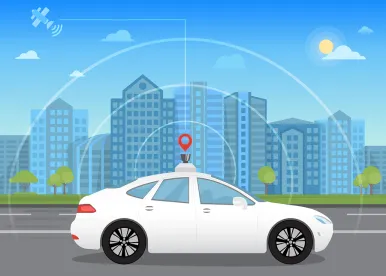In the last half of 2017, the U.S. House of Representatives passed the “Safely Ensuring Lives Future Deployment and Research In Vehicle Evolution Act” (“SELF DRIVE Act”), H.R. 3388, which sought to improve NHTSA’s “ability to adapt federal safety standards to this emerging technology, and clarif[y] federal and state roles with respect to self-driving cars.” A few weeks after the House passed the SELF DRIVE Act, a similar bill in the Senate, the “American Vision for Safer Transportation through Advancement of Revolutionary Technologies Act” (“AV START Act”), S. 1885, moved out of committee. Despite bipartisan support, the Senate never passed the AV START Act and both bills expired when the new Congress came into power in 2018.
Since that time, the automotive industry has continued moving forward to develop automated driving systems (“ADS”) and automated vehicles (“AVs”), and the National Highway Traffic Safety Administration (“NHTSA”) has continued to seek ways to remove regulatory barriers for these technologies. In recent weeks, Congress’s interest in legislating in this area appears to be increasing.
The House Committee on Energy and Commerce and the Senate Committee on Commerce, Science, and Transportation have been working together to develop a bipartisan, bicameral bill that relates to ADS technologies and AVs. A recent letter from these committees to manufacturers, consumer groups, and other interested stakeholders sought feedback to help Congress identify important issues and prioritize them in a potential bill. The topics included:
-
Rulemakings, including updating existing standards and setting new standards
-
Federal, state and local roles and access to courts
-
Exemptions
-
Testing expansion
-
Advisory committees
-
Cybersecurity
-
Privacy
-
Consumer education
-
Safety evaluation reports
-
Crash data, including reporting requirements
-
Resources for NHTSA
-
Disability access
-
Maintaining DOT's existing authority over larger vehicles
-
Non-AV safety requirements
These topics touch on many of the key issues that need to be reconciled in order to facilitate further development of ADS technologies and AVs. Some of these issues include reconciling differences among state regulations related to testing and deploying these technologies, understanding a manufacturer’s liability (such as for vehicles or components that are altered or modified by another party to accommodate ADS technologies), enhancing NHTSA’s ability to quickly and nimbly amend regulations to respond to advances in technology, securing and protecting electronic functions and information, using exemptions from safety standards to facilitate testing and deployment of these technologies, amending current safety standards that never contemplated these technologies, and educating the public on the benefits and limitations of these technologies.
In addition to the work the House and Senate committees are undertaking, on July 18, 2019, Senator Edward J. Markey (D, Massachusetts) and Senator Richard Blumenthal (D, Connecticut) re-introduced their “Security and Privacy in Your Car Act” (“SPY Car Act”), S. 2182. The bill would direct NHTSA and the Federal Trade Commission (“FTC”) to establish standards that address cybersecurity threats and protect drivers’ privacy. The bill would create cybersecurity standards that would require all new vehicles to have “reasonable measures” to protect all entry points (i.e., means to access driving data or control signals) from hacking attacks and for vehicles to use designs that “incorporate isolation measures to separate critical software systems from noncritical software systems.” SPY Car Act of 2019, S. 2182, 116th Cong., § 2. The SPY Car Act would also require all driving data to be secured and vehicles to be equipped with “capabilities to immediately detect, report, and stop attempts to intercept driving data or control the vehicle.” Id.
The SPY Car Act also would require a “Cyber Dashboard” on the Monroney Sticker with “easy to understand, standardized graphics” to inform consumers about the extent of the vehicle’s protection from cybersecurity threats and its ability to protect personal information. Id. at § 3. Manufacturers would also be required to provide consumers with a “clear and conspicuous notice” detailing driving data that the vehicle collects, stores, or transmits and permit consumers to opt out of this data collection. Id. The bill would require NHTSA and the FTC to propose rules to effectuate these standards within 18 months, to promulgate final rules within three years, and to review and update existing rules every three years.Id.
These recent developments underscore the need for the United States to develop a predictable framework for addressing advanced vehicle technologies. This framework should address issues that arise across the automotive industry – including heavy vehicles, suppliers, vehicles manufactured in multiple stages, modifiers, ride hailing operators, and other non-traditional entities that are developing and deploying these technologies. Because ADS technologies and AVs are still in the early stages, it is vital that statutes and regulations remain technology neutral and provide a predictable and flexible framework that facilitates further investments and development of these life-saving technologies.
In addition to facilitating development and deployment of these technologies, effective regulations can provide an avenue to build further public acceptance.
These challenges are a tall order that have thus far eluded Congress and NHTSA. But further legislation and regulation in these areas are likely inevitable (though when remains unclear). In order to facilitate effective and flexible regulations, manufacturers should look for opportunities to engage with Congress and regulators, such as educating them on developing technologies, commenting on proposed regulations, participating in industry groups working to develop standards, participating in international projects to harmonize standards, and seeking ways to remove some of the mystery of these technologies for the public.





 />i
/>i

